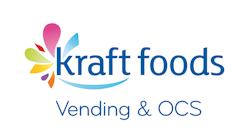Millions of dollars are spent on developing and launching new products each year but the vast majority fail. A new approach by Nielsen, unveiled at the company’s Consumer 360 conference in the U.S., revolutionizes the traditional method and can improve the likelihood of new product success to 75 percent. For the first time, companies have a clear determination of whether new products will succeed and how to increase their odds of success.
Nielsen has identified 12 criteria every new product must meet in order to succeed, with specific recommendations on what companies should change before the new product launch to increase chances of success. Companies spend on average $15 million on marketing for a new product launch, with some companies spending more than $60 million and generally, new products have a 10 percent chance of succeeding. With Nielsen’s new approach ? based on tracking 600 product launches and testing 20,000 initiatives ? the success rate can improve to 75 percent.
“Nielsen is changing the innovation game,” said Vicki Gardner, senior vice president, Product Innovation North America, Nielsen, in a prepared statement. “By identifying key criteria every successful new product must meet, we’re helping marketers know where to focus their efforts in new product development and in-market execution. As a result, companies gain a huge leap forward with more actionable advice and better decision-making, and that means better investment of new product marketing dollars.”
In the consumer packaged goods (CPG) industry, when deciding which new products to pursue, many companies rely on the same core measures from the ‘pencil and paper’ days of research. While these key dimensions provide a good measure of likely sales, Nielsen’s approach goes beyond sales forecasts and provides an understanding of success on consumer benchmark areas, such as ‘findability’ and advantage over others, for an improved prediction of new product success.
“At Kraft Foods, our growth strategy includes a stepped-up emphasis on great brand marketing and great innovation,” said Barry Calpino, vice president, Innovation, Kraft Foods North America, in a prepared statement. “We feel Nielsen’s new method gives us a much richer and more in-depth assessment of our initiatives. And importantly, it’s designed to suit the needs and realities of being an innovation project leader – the person who uses the tool to help make our ideas bigger and better when we go to market.”
Twelve Steps to Innovation
Nielsen’s twelve success factors encompass five main areas:
1) Distinct Proposition - Does the product offer a true innovation?
2) Attention- Catching – Will the product be noticed?
3) Message Connection - Is your message conveyed in a simple, persuasive way?
4) Do you have a Clear and Concise Message? Is it conveyed without clutter?
5) Does your product have a substantial Need/Desire? Is it solving a problem or meeting consumers’ needs?
6) What is your product’s Advantage? Is it better than others currently in the marketplace?
7) Credibility - Are your product claims believable?
8) Acceptable Downsides - (Typically related to side effects for over-the-counter (OTC) products)
9) Findability - Is the product where consumers expect it to be? Can shoppers find it easily among the competition?
10) Acceptable Costs - What are the cost/benefit trade-offs at the shelf? This could be price, calorie content, and usage instructions, among other factors.
11) Product Delivery - Did you meet or exceed consumers’ expectations? Are you delivering on your product’s promise?
12) Product Loyalty – Will consumers continue to purchase your product in the future?
“You are only as strong as your weakest link,” said Gardner. “Take a triathlon as an example. You don’t need to be the fastest swimmer, biker or runner, but in order to win you need to do well in each event. You can’t win in the swim but get off the bike and push it up the hill. New product success is not about doing one thing really, really well; it’s about doing everything you need to do well.”





